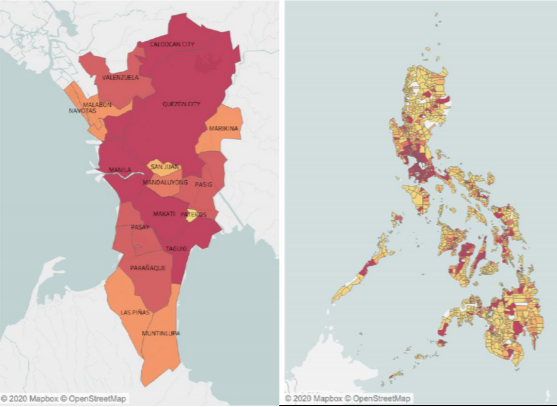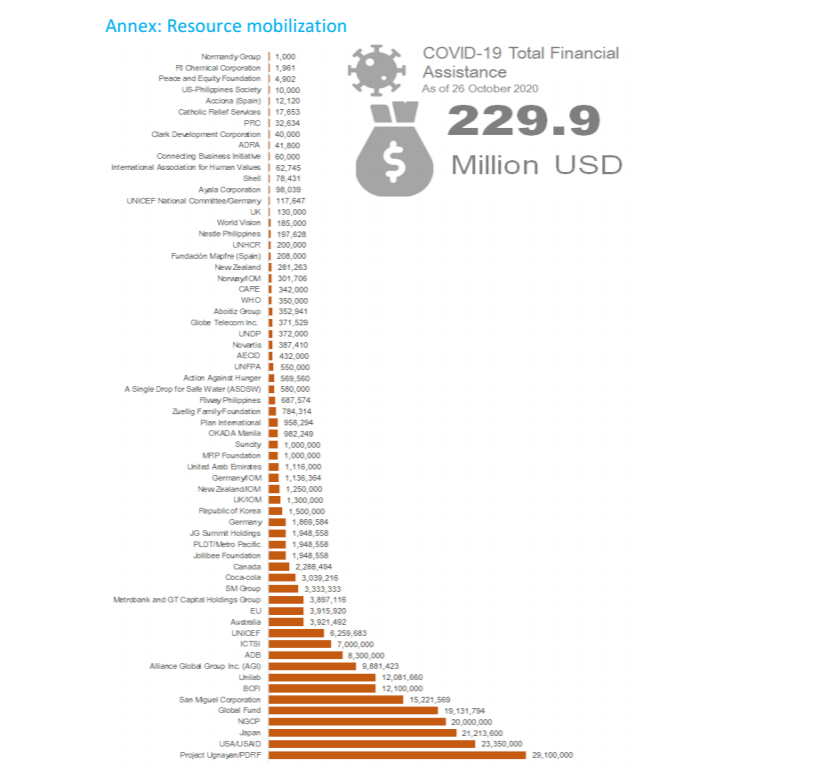Overview of the situation in the Philippines according to the WHO
As of October, 27,2020 373,144 people were confirmed in the Philippines, 7,053 died and 329,848 people were recovered from coronavirus. . The proportion of deaths among confirmed cases according to COVID-19 is 1.89%. Most cases were reported from the Metro Manila region (49% of new cases), followed by Calabarzon, Central Visayas and Central Luzon. Currently, hospitals report 40% occupancy of hospital beds allocated to patients with COVID-19, with differences between regions.
Maps of infected Philippines by cities (right) and infections of cities in Metro Manila (left)
There has been a decrease in daily reported cases and deaths in recent weeks. A moderate and asymptomatic phase of the disease is marked as cured 14 days after the start or testing. The government is making further efforts to combat COVID-19, including through increased community involvement, targeted isolation and quarantine measures, expanded contact monitoring, and a continuous increase in laboratory capacity. There are currently 116 laboratories certified to perform RT-PCR tests, 36 specialized laboratories and another 95 public and private laboratories.
Development of the number of active cases during the whole pandemic in the Philippines
Several types of local restrictive restrictions are still in place, but travel between regions with different quarantine regimes is partially renewed, however, a negative PCR test is a condition. Churches in Manila are currently allowed to occupy 30% of their capacity. Pastors will also hold masses in school gyms to avoid large gatherings during the Undas and Simbang Gabi (festive masses). Large gatherings are prohibited throughout the country, except for government services or authorized humanitarian activities.
Summary of donations from organizations, states, companies to the Philippines as of 27.10.2020
The Philippines is funded by non-governmental organizations such as UNICEF, NGCP, USAID, IOM and several others, as well as independent states. Most, however, Japan, Canada, Australia and the Republic of South Korea. Assistance is provided in the form of financial donations, medical courses, trained staff and support campaigns. One of the similar promotional events is currently underway, which aims to raise awareness of the vaccination of children against measles, rubella and polio during the global pandemic.
For an up-to-date review in the Philippines: http://www.doh.gov.ph/covid19tracker
The article is based on the source: https://www.who.int/philippines/emergencies/covid-19-response-in-the-philippines/situation-reports





